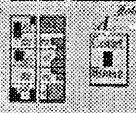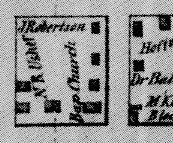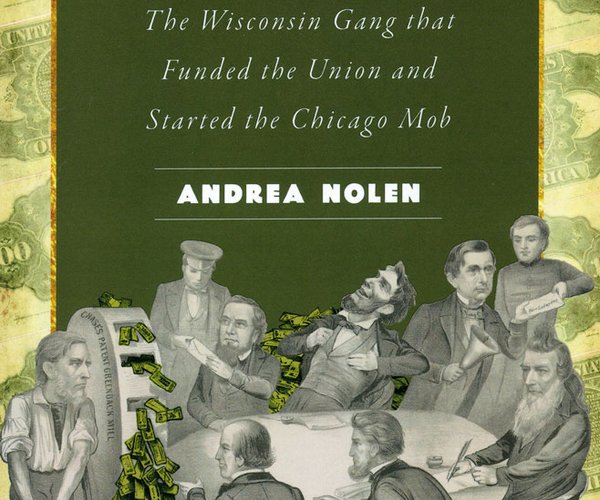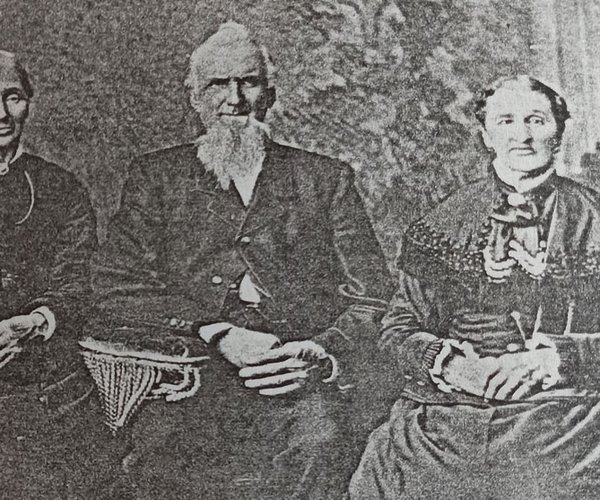The new firm of Willaman & Thorp was also in the Peter Wells’ building that caught fire on November 11, 1890 on 17th Ave. south of the Square. It suffered considerable damage with a total loss of about $15,000. Wells had carried insurance on this block for many years until shortly before this fire. His loss was estimated to be between $5,000 and $8,000. The newspapers said that he planned to repair the block, but nothing more was reported in the paper.
Julia, Peter’s second wife, passed away in February 1891 at the age of 77. She “was regarded as an excellent, kind woman, faithful wife, and a devoted mother of a large family.” It was shared on April 22 that Peter had “been quite busy the past 10 days in dividing among his children, several parcels of real estate in this city, aggregating about $60,000. Mr. Wells don’t want to be bothered with so much property — and he chooses to divide up to suit himself. These deeds will make work for the Register” of Deeds.
Peter purchased the Whitney Block, the oldest building on the east side of square, on September 5, 1892 for $5,000. This building now houses Bartels & Co. Tap and Sunrise Donut Cafe, and was the building that stopped the devastating 1879 fire from destroying the rest of the buildings on the east side of the square.
In November he “had the old armory partitioned into two stores to be occupied by the hardware store and tin and pump shops now located in the Syndicate Block.”
The Monroe Sun reported on February 4, 1893 that Peter Wells had paid $1,320.25 in property taxes for the previous year. That is not a surprising amount considering how much property he owned.
It was reported on March 29, 1893, “A new block of brick, stone, and iron is to be erected upon the lots owned by Peter Wells and Mrs. Weber, on east side public square, where now stand the three old rickety ‘chebangs’ of the middle Monroe ages. Gradually the old landmarks are disappearing.”
Articles of agreement were drawn up in May between Jeff Weber, Carl Vogt, and Peter Wells who were all building new brick structures. For the consideration of the use of the stairway and hall, Vogt gave Wells half of his south wall. Peter decided instead to purchase a half interest in the south wall of Vogt’s Block for $550. These buildings would finally make the east side a solid brick row. The Vogt Block was nearly to the rafters of the upper story at this time. Peter decided to put bay windows in the upstairs of his building. This building was “a departure in style from anything he has ever built. In fact, it is a great improvement. The ceilings of the stores are of sheet steel embossed to form a pleasing affect when painted. The first of the kind ever put up here.”
Even though Peter had dispersed of much of his property to his children, he purchased the McKey Block [where the Eugene hotel later sat] for $10,000 in May 1894 while constructing the Wells Block on the east side of the Square, which now houses Chocolate Temptation, and still bears his name at the top.
After McLean & Benkert’s store was flooded in February 1895, Peter Wells sold out the entire lot of damaged goods at half of the original cost, suffering a net loss of $450.
In April 1895, Wells was having “extensive and much needed repairs made upon several of his store buildings about the city. It’s a cold day when Mr. Wells has no workmen under pay.” It was shared in August that he would have new plate glass fronts put in the McKey Block as well as having the brick changed to a “roseate hue.” At the same time Peter, now almost 80, was trying to purchase the Fox property on the west side of the square. He wanted to build a brick building adjoining his property.
One day in October, the pastor of the English Lutheran Church was called into Lichtenwalner’s store as he passed by. As he went to the back of the store Uncle Peter gave him a check for $100 to pay on the new church lot. “And if it is ‘more blessed to give than to receive,’ Uncle Peter Wells must have had a great blessing, for there was one heart made truly glad. We trust he will build many such monuments in the hearts of this people by which to be graciously remembered.”
Peter purchased the Harper & Johnson agricultural implement warehouse in August 1896. “Monroe property is good enough for Peter.”
At about midnight on Thanksgiving night 1896, “fire burst from the sides of an old lumber house on Racine [12th] Street, owned by Mr. Peter Wells; and some excited cub in the gallery at Turner Hall shouted fire! and a regular stampede for the front doors was prevented only by the stentorian voice of L. A. Woodle, who discovered the danger and the fire at the same time, and called down the house to order. Nevertheless, a large number of the dancers rushed to the side of the conflagration preferring to see for themselves the Thanksgiving blaze. A high wind was up and the isolated position of the building and the persistent work of the fireman prevented a great conflagration.”
Wells then purchased the building at 1007 16th Avenue from Joseph D. Mosher on September 23, 1897 for $5,850. Mosher had built this ornate building in 1869; it is currently the oldest building on the west side of the square.
The final column about Peter Wells will be printed next week.





